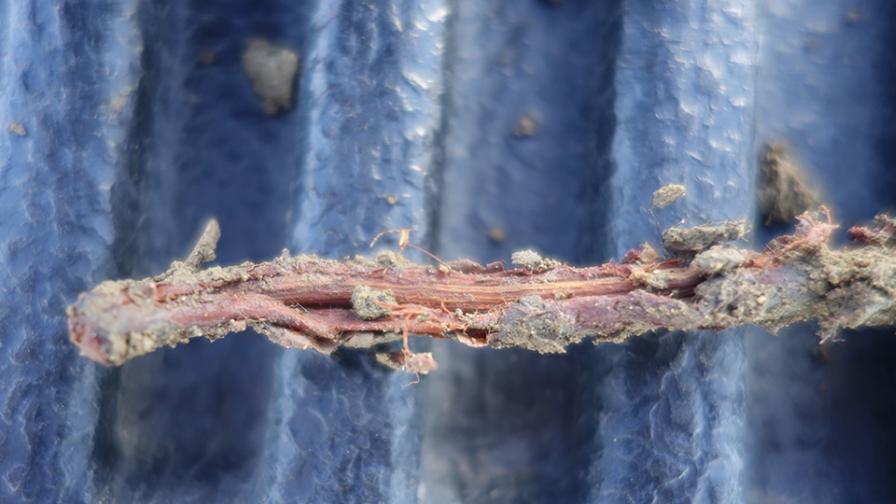Be Proactive To Keep Your Almond Crops Disease-Free
Fall has been wonderful for many years in the almond business, harvesting generally large yields of the high-dollar crop and getting a big check. However, as every grower knows, the industry has hit some tough times, with lower prices the main culprit.
Couple that with the huge shipping problems, increasing input costs, supply chain disruptions, and dwindling water resources, and growers are in a place many have never been before.
According to field representatives for a couple of large companies that collaborate closely with growers in the San Joaquin and Sacramento valleys, many growers are going to have to carefully plan for the first time. Kevin Caffrey, Technical Services Representative, Southern San Joaquin Valley for BASF, says almond growers simply didn’t need to be so cautious in the past, when the nuts fetched $5 a pound.
“For a long time, people had a plan, but that plan was basically, ‘Do the same thing they’ve been doing for the past decade.’ You’re making money either way, whether you spray or you don’t,” he says. “When we had five-dollar nuts, you could do pretty much anything you wanted and still make money.”
Now that prices have plunged by more than half, growers can’t afford to be so cavalier, Caffrey says.
“We all hope to see $4 to $5 nuts, but $2.50 is more realistic, so let’s plan for success going into next year this year,” he says. “The whole thing is planning. Consider each stage and how your trees did. Compare their performance to where they should have been.”
POSTHARVEST POINTS
Right after harvest is a great time to begin planning for next year, agrees Garrett Gilcrease, Agronomy Service Representative at Syngenta, who is also based in the Southern San Joaquin Valley.
“In normal years, growers would be looking at the quality of the harvest — how much NOW (navel orangeworm) damage they have. But because of lower prices, pricing premiums are lower, too, and not worth it compared to the $40 (per acre) saved (from omitting a NOW spray),” he says. “If you’re farming in California, costs are always a problem, but this year input costs are much higher and commodity prices are much lower. Costs are always a concern, but they’re the number one concern this year.”
Coming out of harvest is evaluation time, Gilcrease says. Start with looking at the overall health of the trees, paying particular attention to root diseases, which are often deadly. If you suspect disease, be sure to test for such diseases as phytophthora. Right now, during the fall flush when temperatures fall below 90ºF, is a great time to treat for phytophthora, he says, and it’s best to bite the bullet and do it.

Phytophthora infection of an almond root. Note the redness and root skin peeling away with little structure.
Photo by Garrett Gilcrease, Syngenta
“Yes, yields and prices are low, and there’s not a lot of money left on the table. But these diseases can hang on for a long time,” he says. “If nuts go back to $3, you don’t want to get caught with 60% yields.”
Gilcrease says he recommends growers treat their trees in fall with fungicide Ridomil Gold or Orondis (Syngenta). But he knows that to save money, most growers will likely only spray for disease in the spring, especially if it’s as dry as expected. If only spraying in the early spring, he recommends Orondis. Although more expensive, it’s a better product.
WALL-TO-WALL TREES
Caffrey agrees that disease should be the focus this time of year. Levels of disease are generally up because almond farming has changed in the valley, where orchard blocks extend for mile after mile, virtually unbroken.
“The agronomics of tree nuts has shifted. Planting density, pruning, everything is changing,” he says. “There are still 20-acre growers with 50-year-old trees, but far fewer than there used to be.”
If growers do find disease, Caffrey recommends they spray with Merivon fungicide (BASF), which also gives the trees physiological benefits, particularly during the fall freezes growers in the Sacramento Valley have been dealing with in recent years.
“It [Merivon fungicide] allows plants to handle stress better. It’s not a magic product. If temperatures get down in the single digits, it won’t save the tree. But it can help out for a few degrees,” he says. “It’s for both disease control and plant health, as it helps the tree access nitrogen and other nutrients.”
Having a plan will help, although Caffrey says he doesn’t envy growers who must make the tough decisions on whether to spray when times are so tight and the new products, though highly effective, don’t come cheap.
“They’re trying to save a buck, but they could lose out on $20,” he says.









